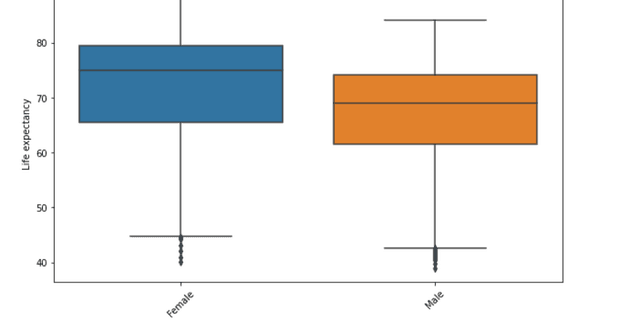Afghan Women’s Life Expectancy Determinants
Data Science and Analytics
Tags and Keywords
Trusted By




"No reviews yet"
Free
About
Data explaining key developmental and public health trends specifically concerning the female population in Afghanistan from the year 2000 through 2018. This curated set integrates World Development Indicators (WDI) with critical health statistics, including mortality rates, disease incidence, and immunization efforts. The metrics are highly relevant for academic research, governmental analysis, and machine learning initiatives focused on predicting life expectancy and assessing societal progress in developing regions.
Columns
- Country: The geographic location (Afghanistan).
- Year: The annual period of observation (2000-2018).
- Gender: Specifies the population group (Female).
- Life expectancy: Average expected lifespan at birth.
- Unemployment: Percentage of the female labour force that is unemployed.
- Infant Mortality: Deaths of infants under one year old (per 1,000 live births, contextually derived).
- GDP: Gross Domestic Product (current US$).
- GNI: Gross National Income (current US$).
- Clean fuels and cooking technologies: Percentage of the population using clean cooking fuel and technology.
- Per Capita Mortality caused by road traffic injury: Deaths per capita attributed to road incidents.
- Tuberculosis Incidence: New cases of tuberculosis per 100,000 people.
- DPT Immunization: Coverage rate for Diphtheria, Pertussis, and Tetanus vaccine.
- HepB3 Immunization: Coverage rate for the third dose of the Hepatitis B vaccine.
- Measles Immunization: Coverage rate for the Measles vaccine.
- Hospital beds: Number of hospital beds available per 1,000 people.
- Basic sanitation services: Percentage of the population with access to at least basic sanitation facilities.
- Tuberculosis treatment: Rate of successful tuberculosis treatment outcomes.
- Urban population: Percentage of the total population residing in urban areas.
- Rural population: Percentage of the total population residing in rural areas.
- Non-communicable Mortality: Mortality rate from cardiovascular disease, cancer, diabetes, or chronic respiratory disease between the ages of 30 and 70 (contextually derived).
- Sucide Rate: Suicide mortality rate per 100,000 population.
Distribution
The data is structured in a tabular format, typically suited for CSV files or relational databases. The current extract provides 19 distinct annual records covering the period from 2000 to 2018. Exact row counts for the full dataset are not specified, but the structure consists of 22 distinct indicator columns recorded annually for Afghanistan's female population.
Usage
- Training statistical models and machine learning algorithms, such as Random Forest or Neural Networks, to predict changes in life expectancy.
- Conducting socio-economic analysis linking national economic performance (GDP/GNI) to specific female health outcomes (Infant Mortality, Non-communicable Mortality).
- Evaluating the long-term impact of public health interventions, particularly tracking immunization coverage rates and basic sanitation improvements.
- Informing policy decisions related to women's health and development within conflict-affected or developing nations.
Coverage
- Geographic Scope: Afghanistan.
- Time Range: Annual observations from 2000 up to and including 2018.
- Demographic Scope: Exclusively focuses on indicators pertaining to the Female population.
- Data Source Note: The indicators are derived from established global sources, including the World Bank's World Development Indicators and health data provided by the World Health Organization (WHO).
License
CC0: Public Domain
Who Can Use It
- Data Scientists: Utilising time-series analysis to model trends in mortality and health service access.
- Public Health Officials: Benchmarking Afghanistan's progress against global health targets, such as reducing infant mortality and increasing immunization rates.
- Economists: Studying the correlation between national income indicators and population health metrics.
- University Researchers: Writing dissertations or academic papers focused on gender and development studies in South Asia.
Dataset Name Suggestions
- Afghanistan Female Health and Development Indicators (2000-2018)
- Afghan Women’s Life Expectancy Determinants
- Gender-Specific WDI Metrics: Afghanistan Focus
Attributes
Original Data Source:Afghan Women’s Life Expectancy Determinants
Loading...
